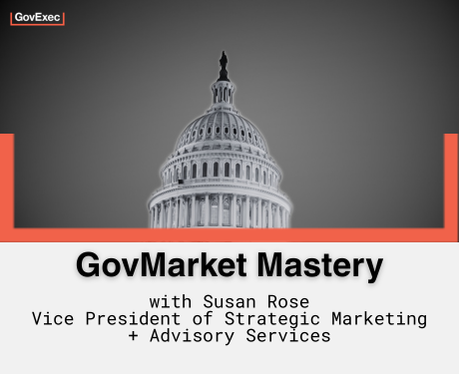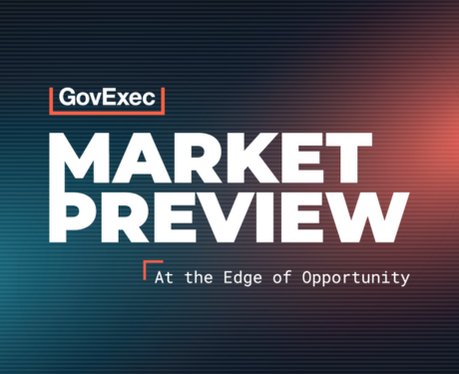Government contractors face unique marketing challenges (not the least of which is building brand recognition) in this extremely competitive market.
GovExec’s annual Leading Brands study, celebrating a decade of insights to improve contractor connections with the government, has just dropped its 2024 results, offering a front-row seat to see how the biggest players stand out and stick around in the minds of government buyers.
The study surveyed decision-makers across federal agencies and highlighted the importance of the four pillars of branding:
- Awareness
- Familiarity
- Favorability
- Customer Loyalty
By understanding and leveraging these key performance indicators, B2G marketers can develop more focused, actionable strategies that resonate with their target audiences.
So, as you’re preparing for 2025, here’s a look at how the leading brands are doing it and how you can, too.
Awareness and Familiarity: The Foundation of Brand Strategy
Think of brand awareness as the handshake and brand familiarity as the conversation that follows. Are you a passing introduction or a memorable story? The Leading Brands 2024 study lays out three tiers of brand awareness:
- Pervasive Brands: These companies have broad market awareness and are often recognizable due to their presence in both the consumer and commercial sectors.
- Known Brands: These brands are still widely recognized but may be more prominent within specific submarkets.
- Niche Brands: These companies are well-known in their respective niche markets but lack universal recognition.
Ask yourself: Where does my brand fit?
If it’s in the niche bucket, maybe 2025 is the year to broaden those horizons. Allocating your budget to brand awareness can help move that needle.
But your brand needs more than a handshake; familiarity makes the sale.
Bridging High Awareness and High Familiarity: The Fine Balance
People might know you exist, but do they know what you do?
The study revealed several companies with high brand awareness levels but who still need to increase familiarity. And, some brands, despite lower overall awareness, enjoy deeper familiarity with their audience, which drives stronger favorability.
Want to get from “I’ve heard of them” to “I trust them”? It’s a marathon, not a sprint. Build your narrative through a steady stream of educational content:
- Thought leadership
- Product specifications
- Articles
- Case studies
- Webinars
The more, the merrier.
Awareness might get you noticed, but familiarity gets you picked. So, be sure to convey the depth and breadth of your capabilities.
Driving Favorability: A Strong Brand Wins Over Hearts and Contracts
Once awareness and familiarity are sorted, it’s time to get people to like you. Building favorability means your buyers don’t just know your brand; they have a positive impression of it.
The study breaks favorability into three camps:
- Affinity Brands: These companies enjoy overwhelmingly positive perceptions.
- Agreeable Brands: These brands receive varying levels of positive sentiment from different sub-audiences.
- Concerning Brands: These companies face challenges with brand perception in specific sectors.
Want to be an Affinity Brand? It’s not about fancy ads, a pretty logo, or name recognition; it’s about delivering on promises and showing up when it counts.
Ensure your communications are transparent and consistent, especially when things get bumpy. Sharing insights and showing your company’s expertise can also influence favorability, making thought leadership content valuable.
Want the government to love you? Give them reasons to believe in your reliability.
Customer Experience: The Key to Loyalty
Winning the contract is just the beginning. Keeping that contract (and winning more in the future) is all about customer experience.
Maintaining strong customer relationships and delivering exceptional experiences post-contract are vital to driving customer loyalty. According to the data, customer satisfaction and loyalty are highly correlated with positive brand perceptions.
Marketers must work hand-in-hand with customer success teams to ensure that communication remains open and consistent throughout the customer’s journey. Every hiccup is an opportunity to demonstrate your commitment. Even if issues arise during project delivery, transparent communication can mitigate negative impacts on brand perception.
Being prepared to address any issues head-on and pivot discussions when necessary is crucial for maintaining trust with government clients.
Differentiation: Your Brand Attributes Are Your Superpowers
What makes your brand special?
While awareness and favorability are critical, the Leading Brands 2024 research underscores the importance of differentiating based on key attributes. In evaluating eight brand attributes, ranging from innovation to value, companies that stand out in specific areas have a competitive advantage.
Interestingly, the study found that while many companies emphasize value, 75% of the brands surveyed were perceived as average in this area. This suggests marketers should focus on other differentiators, such as innovation or customer experience, to stand out. Brands that successfully highlight their unique strengths in these areas will gain favorability and secure long-term government contracts.
If you’re blending in, you’re losing out.
Takeaways for B2G Marketers: What's Next?
Ready to sharpen your 2025 strategy? Here’s your cheat sheet:
- Be Different.
Focus on differentiation. Ensure that your brand stands out not just in terms of awareness but also in the specific attributes that matter to your audience. Lean into your unique strengths, whether they be innovation, customer experience, or a niche capability.
- Teach to Reach.
Move beyond awareness-building campaigns and invest in educational content that helps government decision-makers understand the full range of your capabilities. Case studies, success stories, and thought leadership can play a pivotal role in driving familiarity and favorability.
- Customer Experience Matters.
Post-contract performance is critical to maintaining a positive brand perception. Regularly engage with customers, address issues proactively, and ensure consistent communication to build long-term loyalty.
- Let Data Be Your Guide.
Finally, use data-driven insights, like those provided in the Leading Brands research, to benchmark your brand against competitors. Understand where you excel and where you need to improve and tailor your marketing efforts accordingly.
By focusing on these critical areas, B2G marketers can build stronger brands within the federal market and drive long-term success through deeper customer relationships and improved brand loyalty.
The playbook is here; you just need to use it.
Ready to Learn More?
How does your brand compare to your competitors? Purchase your custom copy of the Leading Brands study and get the lowdown on what’s working, what’s not, and where you can crush it in 2025.
Whether your brand was part of the study or not, the custom report will help you:
- Understand your unique buyers.
- Assess your company against its competitive set.
- Uncover strengths and weaknesses.
- Provide actionable takeaways.
- Reveal the opportunities to accelerate sales and go to market with velocity.
Download your copy of the key study takeaways, and our team will contact you with more information about how the custom report can power up your 2025 marketing efforts.
For more information on Leading Brands or to purchase your custom report,
contact Solutions@GovExec.com.


